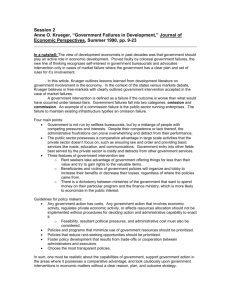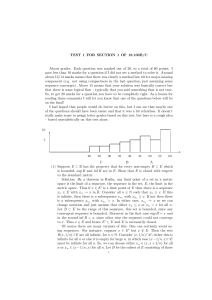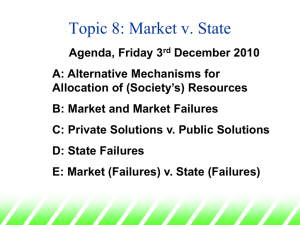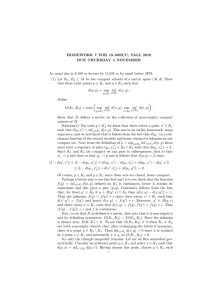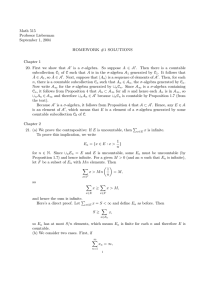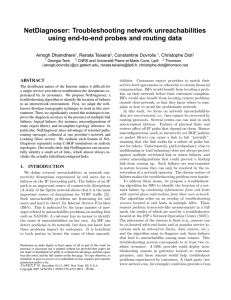NETWORKS Hagerty FAILURE OF RANDOM
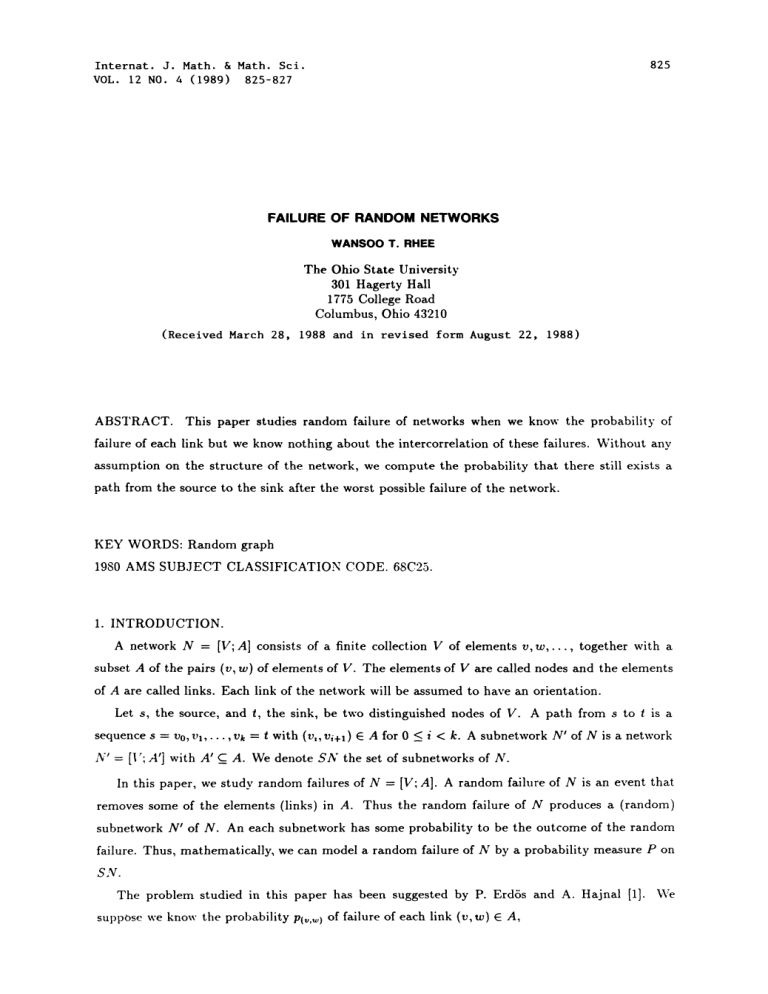
Internat.
J.
Math. & Math.
Sci.
VOL.
12 NO.
4 (1989) 825-827
825
FAILURE OF RANDOM NETWORKS
WANSOO T.
RHEE
The Ohio
301
State University
Hagerty Hall
1775 College Road
Columbus, Ohio 43210
(Received March 28, 1988 and in revised form August 22, 1988)
ABSTRACT.
This paper studies random failure of networks when we know the probability of failure of each link but we know nothing about the intercorrelation of these failures. Without any assumption on the structure of the network, we compute the probability that there still exists a path from the source to the sink after the worst possible failure of the network.
KEY WORDS: Random graph
1980 AMS SUBJECT CLASSIFICATION CODE.
68C25.
1.
INTRODUCTION.
A network N IV; A] consists of a finite collection V of elements v,w,..., together with a subset A of the pairs (v, w) of elements of V.
The elements of V are called nodes and the elements of A are called links.
Each link of the network will be assumed to have an orientation.
Let s, the source, and t, the sink, be two distinguished nodes of V.
A path from s to is a sequence s vo, vl,...,v, with (v,,vi+l) E A for0 < < k.
A subnetwork N’ of N is a network
N’
IV"
A’] with A’ C_ A.
We denote SN the set of subnetworks of N.
In this paper, we study random failures of N
IV"
A].
A random failure of N is an event that removes some of the elements (links) in A.
Thus the random failure of N produces a (random) subnetwork N of N.
An each subnetwork has some probability to be the outcome of the random failure.
Thus, mathematically, we can model a random failure of N by a probability measure P on
SN.
The problem studied in this paper has been suggested by P.
ErdSs and A.
Hajnal [1].
We suppose we know the probability p(,) of failure of each link (v, w) E A,
826 but otherwise we know p(,) w.T. RHEE
P({S’ ft.
,.,ON" S’= [V;A*],(v, tv)
.
A’,A’ C_ A}), (1)
P on SN. We address the following question" nothing about the probability when can we conclude that with positive probability there is a path from s to ?
2.
MAIN RESULTS.
We define the following quantity of a network N case of failure for the network.
[V; A].
This quantity measures the
DEFINITION.
The failure-resistant factor of N given {p(,)" (v, w) is a link of N} is worst inf{P(N’ i
SN" there exists a path in N’ from s to t)} where the infimum is taken over all probabilities P on
SN satisfying condition (1).
The following theorem computes the failure-resistant factor of a network.
It is a remarkable fact that the result holds for any type of network configuration.
a
THEOREM.
For a network N
A inf{0_<,<k p(
[V; A], the failure-resistant factor is equal to -a where
.....
+1)}, the infimum being taken over the set of all paths s v0, vl,..., vk from s to t.
The main appeal of our result lies in its generality.
On the other hand, saying nothing about the intercorrelation of the failures of different links allows e.g. negative correlation between these failures, which is not a typical behaviour.
It would be of interest to have general estimates of the failure-resistant factor of a network for other notions of failure resistance, where the infimum in the definition of failure resistance is not taken over all probabilities of random failures satisfying
(1), but on a smaller set, e.g. by adding the restriction that the correlation between the failures of different links has to be positive.
from s to such that PROOF OF THEOREM.
Consider a path s vo, vl,...,v
0<,<
P(
.....
+1)
< 1.
For any random failure P satisfying (1), .
A’ for each 0 _< < k}) P({N’
6_
SN;N’= [V;A’l,(vi, vi+)
O<_i<k
,
E 1
P(,,,+I).
>_
-a where r is the Since this inequality is also true for all the paths from s to t, we get r failure-resistant factor.
The difficulty is to prove that r
For each s in V, define g(z) inf
<_
1 a, so we have to construct a suitable probability on SN.
(0_<,<
P(
.....
+1)), where the infimum is taken over all the paths
(we set g() 0).
We set f(z) A g(z), so a f(t).
For each pair (v, w) z v0, vl,..., t, z in A, we have
FAILURE OF RANDOM NETWORKS 827 f() < f() + p.,, f() _< f() + p,= so If(v)f(w)l < p(,,=).
So we can find an interval F(,) C [0,1] of length p(,) that contains both f(v) and f(w).
We now define the map h fror-,.
[0,1] to SN as follows. For a in [0,1],
Vfe define the probability P on
SN by writing, P({N’}) A(h-(N’)) for each N’ in SN, where A is lebesgue measure.
By definition of h, we observe that (v,w) h(c) if and only cr 6.
FC..,
), and, since A(F(,,)) p(,,) this implies that P satisfies (1).
We have to show that. if
W {N’
6.
S N; there exists a path in N’ from s to }, we have P(W) < a.
It is enough to prove that if c < a, h(c,) W, because then
P(W) 2(h-(W)) <_ ([a, 1])= 1-a.
We fix a < a.
Suppose, if possible that there is a path s v0, v,,..., t’k in h(a) from s to t.
Then we have f(s) < a < f(v,) a, so there is a largest g < k for which f(vt) < a.
We then have f(vt+) > a, so f(vt) < a < f(vt+l).
The definition of Ft,t,.t+,} shows that a 6.
FI,,,+).
The definition of h shows that (vt, vt+) f h(cr).
This contradiction concludes the proof.
REFERENCES
1.
P.
Erd6s and A.
Hajnal, Some remarks on set theory IX, Combinatorial problems in measure theory and set theory, _Michigan Math.
J.
11, (1964) 107-127.

